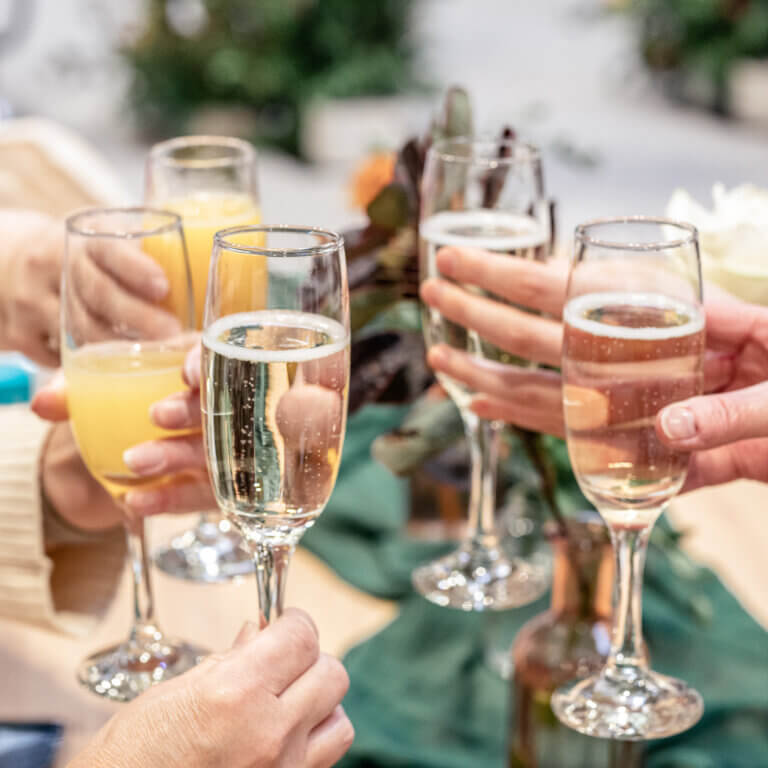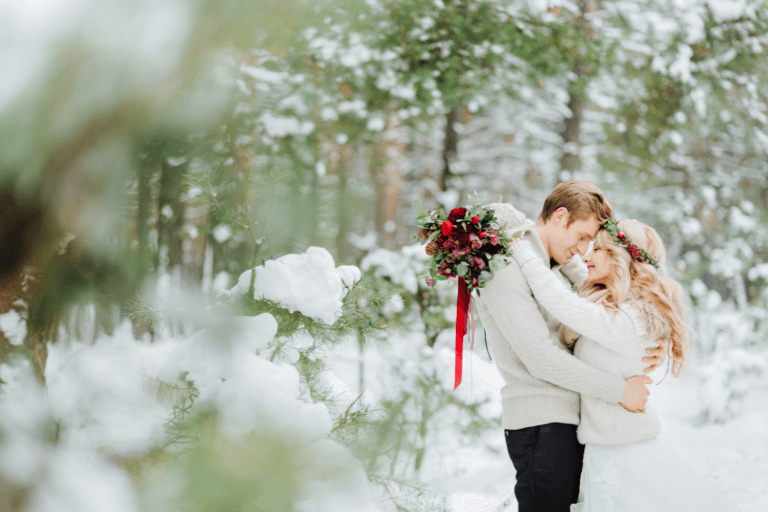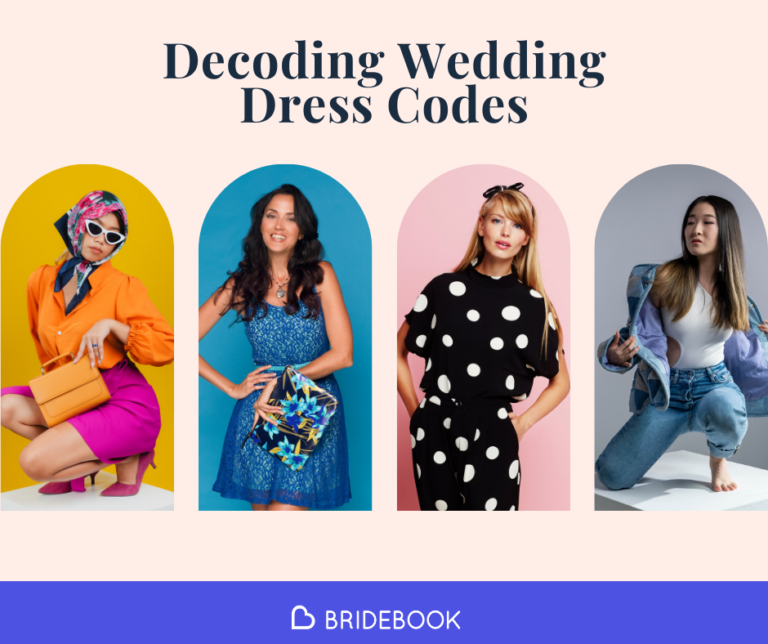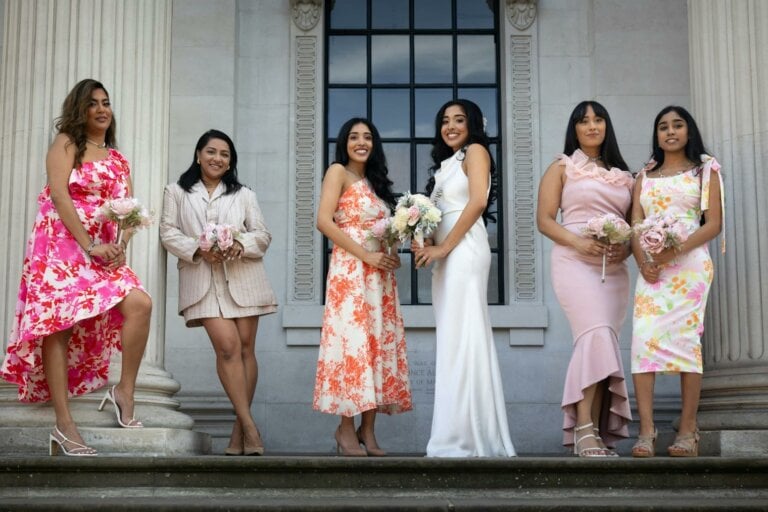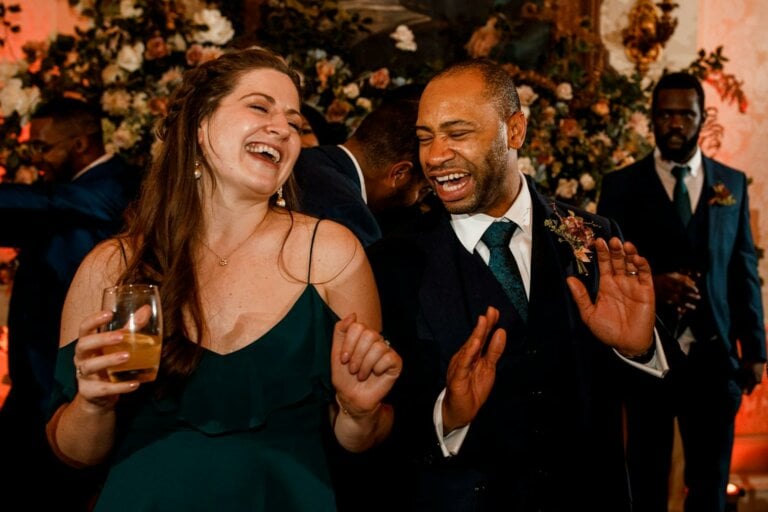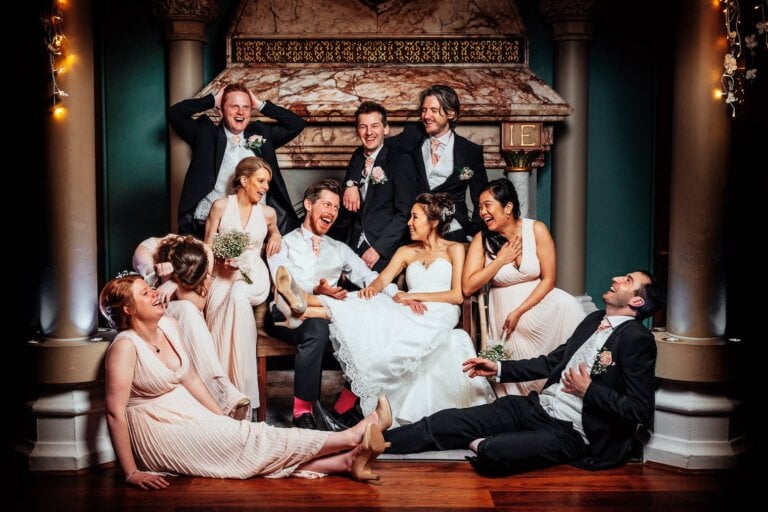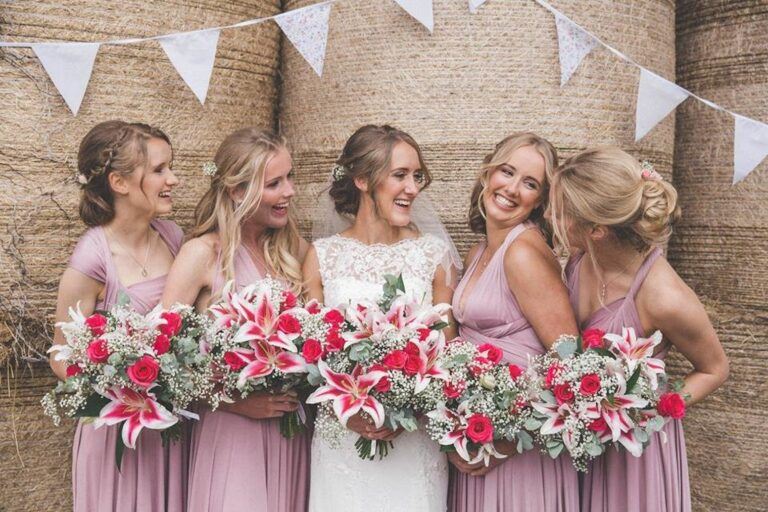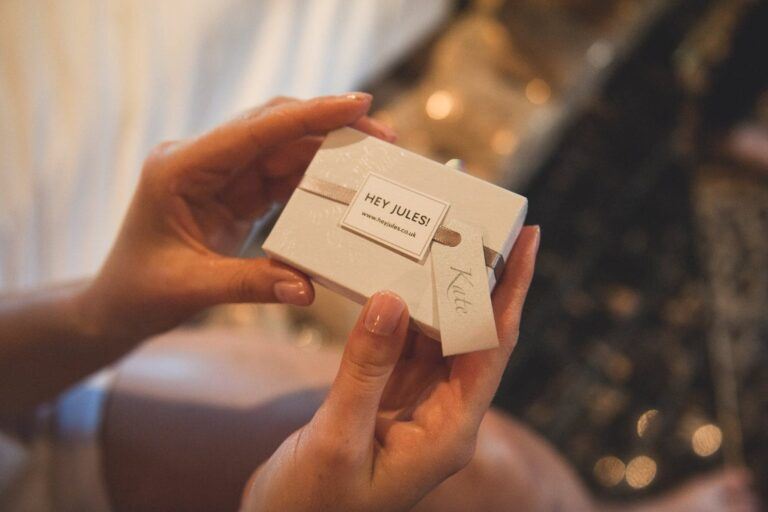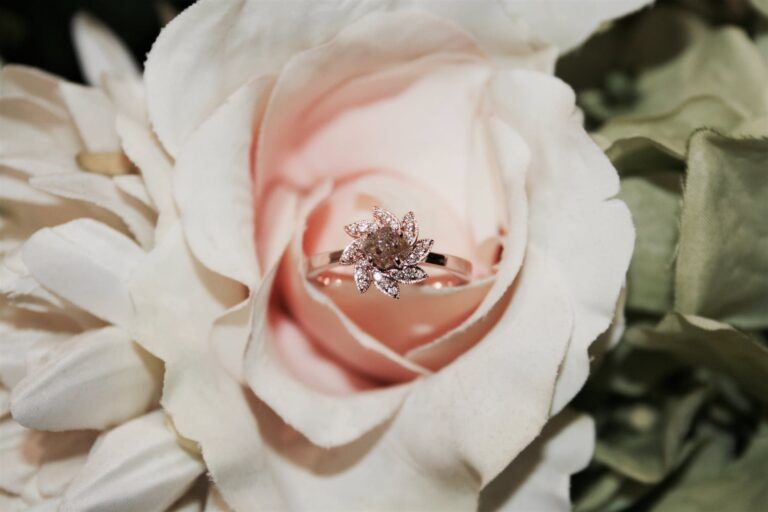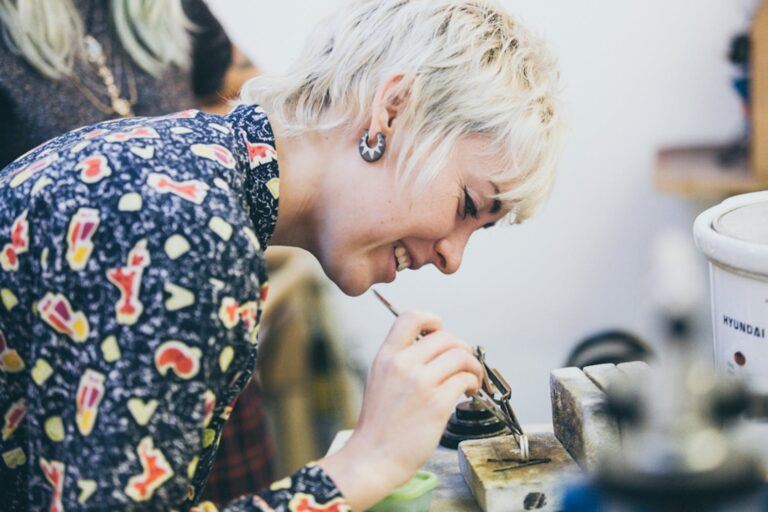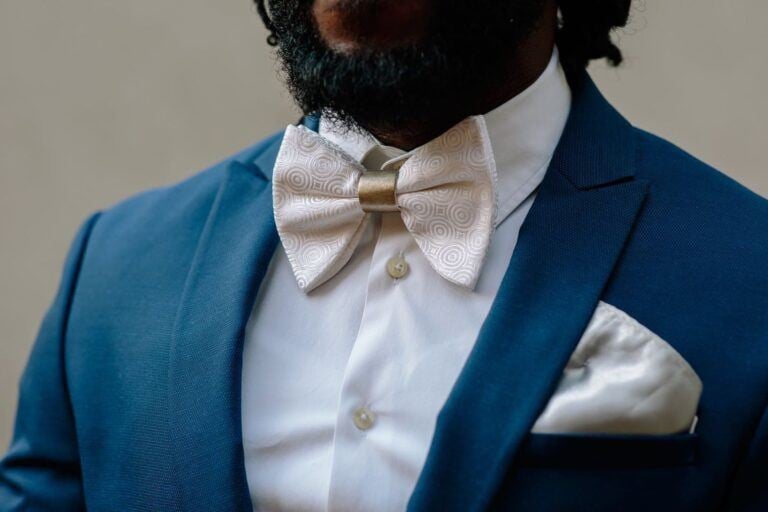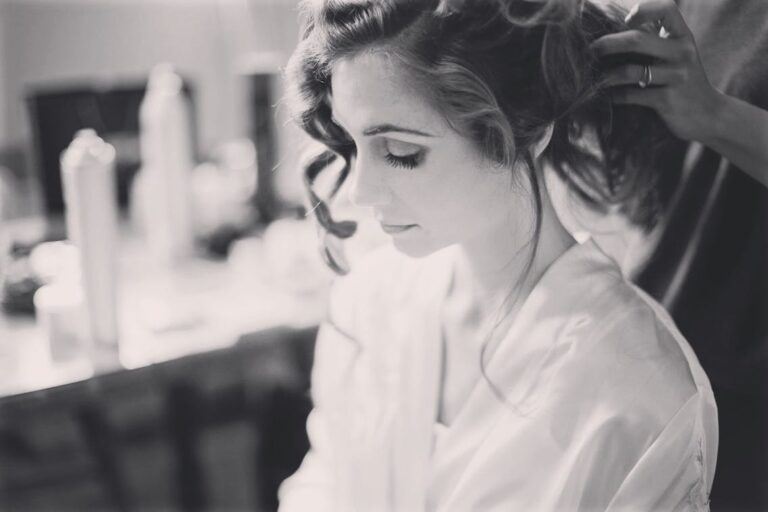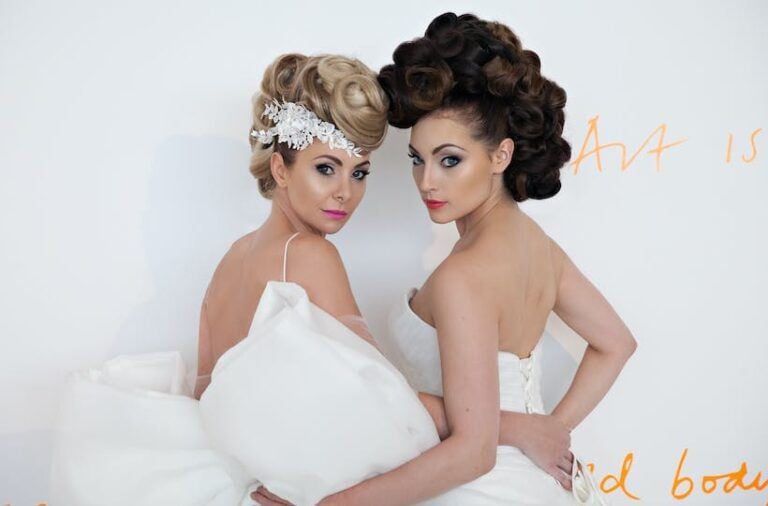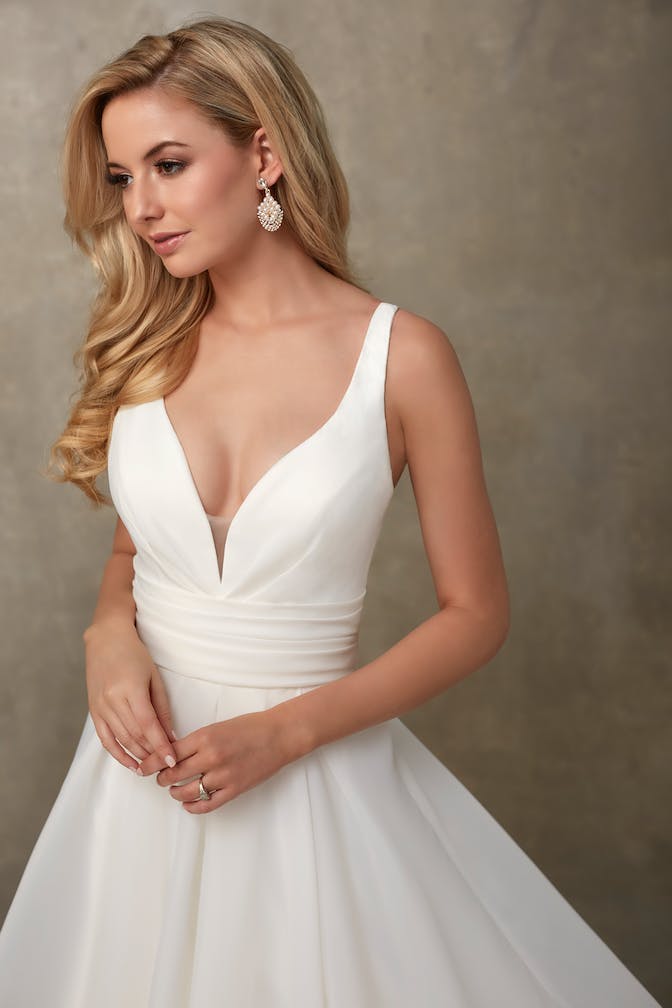You’re engaged! Yay! Cue the “Have you thought about a date?”, “What a beautiful ring”, and “Have you thought about what dress you might like?” questions.
Hey, we get it. People are curious, and your wedding dress and bridal look is one of the most important outfits of your life. It’s the focal point of your big day, and let’s be honest — it’s probably the part you’re most excited about! But with so many options out there, it can be a bit overwhelming.
Don’t stress, though! Whether you’re dreaming of a classic ball gown, a sleek and modern fit, or something totally unique, this guide has got you covered. So, grab a coffee, get cosy, and let’s break down all the dreamy details to help you find the one. Consider this your ultimate guide to wedding dress styles.
How to pick your wedding dress

Picking your wedding dress is a process. It involves planning, researching, talking, experimenting, and most importantly, trying on! Try following these 5 top tips to help pick your perfect wedding dress.
For even more tips and expert advice, you can also check out our dedicated guide on how to choose your wedding dress.
1. Research wedding dress shops
Bridal dress shops tend to cater to specific groups. For example, high-end boutiques are more likely to carry designer, one-off, or custom-made gowns, while more budget-friendly shops might focus on simpler, ready-to-wear options.
In addition, you might find that shops specialise in a certain style or vibe. For example, lace specialists, ball gown specialists, or sleek, modern specialists.
Knowing what a shop specialises in can save you time and help you zero in on the places that have what you’re after. A browse online or a phone call to ask about the kinds of dresses they carry is a good place to start.
You can also check out fabulous bridal boutiques right here on Bridebook, and effortlessly filter by whatever you’re looking for, whether that’s a high-end boutique or bespoke dressmaker, or somewhere that does hats and accessories.
2. Consider the venue and the vibe
You can wear whatever you want on your big day, of course. But the venue and vibe of your big day should be a factor when considering your wedding dress.
For example, if you’re getting married on the beach, a lightweight, flowy gown might be more practical than a heavy ball gown. Or if you’re in a grand, traditional venue, something with a bit more structure and elegance might feel more fitting. Think about the mood of your wedding day, and pick a dress that complements it.
If you’ve got something specific in mind, don’t be afraid to steer away from the theme. But, basing your wedding dress on the overall theme or vibe can help bring everything together and make the whole day feel cohesive.
3. Sit, dance, hug
Don’t skip the sit, dance, hug test when picking your wedding dress. Sure, it looks great standing up in front of the mirror. But can you sit comfortably, throw all the shapes you want to, and hug your loved ones with ease? You want a dress that lets you enjoy every moment of your big day, from the ceremony to the dance floor.
4. Don’t obsess about sizing
It may seem like something small, but try to forget about the size on the label. Just because you’re usually size x, doesn’t necessarily mean you will be in your wedding dress.
The material on a wedding dress is thick, and sizing often runs a bit differently than everyday clothes. It’s totally normal for wedding dress sizes to vary, sometimes by a size or two up or down. So don’t stress if the number is higher or lower than expected — it’s all about how the dress fits and feels.
Ultimately, no one is going to run into your dressing room and see the size on the label. Focus on finding the style that makes you feel beautiful and confident instead of fixating on the tag.
5. Be open-minded
While it’s a good idea to go into wedding dress appointments with an idea of what you might like, it’s also important to keep an open mind. You might have your heart set on a mermaid style, but end up falling for a classic ball gown, or vice versa. Wedding dress shopping is full of surprises, and sometimes the dress that makes you feel the most amazing isn’t what you originally pictured.
Try on a few different silhouettes, fabrics, and details. You might be shocked at how much you love something unexpected! And remember, even if you don’t say “yes” to every dress you try on, each one helps you get closer to what you truly want. Embrace the journey, stay flexible, and trust that the right dress will find you.
The ultimate guide to necklines

Let’s break down all the different necklines you might try when wedding dress shopping. Experiment with different styles to see what feels best for you.
- Sweetheart. A sweetheart is your classic strapless, heart-shaped bustline. Beautiful and iconic, you’ll often find this paired with a fitted bodice or a full skirt for that timeless, romantic look.
- Straight across. Similar to a sweetheart but slightly more modern, the straight across, strapless style is sleek and elegant, offering a clean line across the chest. It’s ideal for brides who want a minimalist look that still feels classic.
- V-neck. A V-neckline has a plunging shape that elongates the neck and adds a touch of sophistication. It’s a versatile option that works beautifully on fitted dresses or flowing A-lines, and it can be as daring or modest as you like.
- Off-the-shoulder. An off-the-shoulder neckline is perfect for brides looking to show off their shoulders and collarbones. It’s both timeless and trendy, adding a hint of romance to any gown style.
- Asymmetric. Asymmetric usually means one-shouldered or diagonally across the chest and brings a modern, edgy twist to bridalwear. It beautifully frames the shoulders and can add balance to gowns with bold silhouettes or simple, sleek lines.
- Queen Anne. The Queen Anne neckline is known for a high collar at the back and a sweetheart or scoop shape in the front. It combines coverage with a hint of romance, making it perfect for brides who want a classic, elegant look. The Queen Anne neckline often works beautifully with lace or intricate detailing, adding a touch of old-world charm to any gown style.
- Halter. The halter neckline is a stylish choice that wraps around the neck, leaving the shoulders bare and drawing attention to the arms and upper back. It works well with both fitted and flowing gowns and is ideal for beach or outdoor weddings.
- High neck. A high neck offers an elegant, sophisticated look with more coverage around the chest and neckline. Often adorned with lace, beading, or intricate embroidery, the high neck brings a vintage or regal feel to a wedding dress, perfect for brides looking for a timeless, classy style.
- Boat neck. Classy and elegant, the boat neck sits wide across the collarbones, creating a beautiful, soft frame for the shoulders and neck. It’s perfect for brides looking for a sophisticated, Audrey Hepburn-inspired style.
- Illusion. An illusion neckline gives the appearance of a strapless or low-cut style while adding extra coverage through a layer of sheer or lace fabric. Often decorated with lace appliqué, beading, or embroidery, the illusion neckline is perfect for brides who want drama paired with modesty.
- Scoop. A scoop neck is the perfect neckline for brides looking for a soft, rounded shape that flatters all body types. This gentle U-shaped neckline adds a touch of sweetness and works well with almost any dress style, from fitted mermaid gowns to flowing A-lines. It’s a versatile choice that feels both classic and romantic.
- Square. Similar to a scoop neck, the square neck is a structured and elegant option with a straight, clean line that frames the collarbone and shoulders beautifully. This neckline has a classic, almost regal feel, and works well with fitted or A-line dresses.
The ultimate guide to skirts and silhouettes

Once you’ve got the neck down, it’s time to decide on skirt style. Whether it’s sleek and sophisticated or ethereal and princessy, there’s a skirt to suit everyone.
- A-line. An A-line skirt is a staple of bridal fashion, offering a classic silhouette that gradually flares out from the waist, resembling the shape of an uppercase “A.” It’s universally flattering, works with various fabrics, and is ideal for brides wanting a bit of volume without the drama of a full ball gown.
- Mermaid. Mermaid skirts are a show-stopping choice for brides who want to show off their curves and make a dramatic entrance. This style hugs you from the bodice down to the knees and then flares out, creating a gorgeous hourglass shape. It’s perfect for a glam, red-carpet vibe and works beautifully with rich fabrics like satin and lace.
- Ball gown. It’s a classic for a reason. Ball gown style wedding dresses are the ultimate in fairy-tale bridal fashion. With a fitted bodice and a full, voluminous skirt that flares out from the waist, this style gives you that dreamy “princess” look that so many brides covet.
- Fit-and-flare. Fit-and-flare skirts give you that mermaid-inspired silhouette but with a little more breathing room. Fitted through the bodice and hips, the skirt begins to subtly flare out around mid-thigh. This style is great for brides who love a hint of drama but want a bit more flexibility for moving and dancing.
- Slip. This one has grown in popularity in recent years. The slip dress offers a sleek, minimalist style that skims the body with a soft, close-fitting silhouette. Made from lightweight fabrics like silk or satin, a slip skirt gives off that “barely-there” look, perfect for modern brides who want something chic and understated.
- Sheath. For a no-fuss, refined look, the sheath skirt is a great choice. This narrow, close-to-the-body style follows your natural lines from top to bottom, creating an effortlessly chic silhouette. If you’re looking for something polished but low-key, the sheath might be just the one.
- Column. Column style skirts are sleek, sophisticated, and perfect for brides who want an elongated, minimalist look. This narrow silhouette gently skims the body without much flare, creating a clean, streamlined shape. They’re comfortable, easy to move in, and ideal for laid-back weddings.
- Tea-length. Who doesn’t love a 50s-inspired tea-length gown? This skirt will hit you just above your ankles, and leans into the playful, vintage vibe for brides wanting a touch of retro charm. Lightweight fabrics like tulle, lace, or satin make it breezy and comfortable, ideal for garden weddings, beach ceremonies, or any themed wedding.
- Empire. Another staple of bridal couture, empire waisted gowns are all about elegance and grace. The skirt flows from just under the bust, creating a long, flowing silhouette that gently skims the body. This style is perfect for brides looking for a romantic, ethereal feel and a comfortable fit.
- Mini. Ultra trendy, mini dresses are all the rage for city or casual weddings. This bold, fun style is perfect for brides who want something fresh and playful, and it’s a fantastic option for showing off killer shoes. Equally, the “double wedding dress” trend is really popular right now. This is where brides change into a second, more casual dress for their evening receptions. Mini dresses are a popular choice for this.
- Tulip. Tulip skirts have a unique, petal-like wrap design that overlaps in the front, giving a romantic but modern look. It’s super flattering and adds a little twist to the usual styles. This one’s gorgeous in drapey fabrics like silk or crepe and is a fun pick for garden or chic city weddings.
- Midi. Hitting at mid-shin length, midi skirts strike the perfect balance between elegance and playfulness. This style gives you a bit of the classic tea-length vibe but with a more modern twist.
- High-low. High-low skirts are skirts that are either a mini or midi length in the front, dropping to a longer length in the back, creating a dramatic and playful look. High-low skirts are fantastic for brides who want something a bit out-of-the-box, and they work beautifully for weddings of all styles. Plus, they make dancing a breeze!
- Drop-waist. Effortlessly regal, a drop-waist skirt elongates the torso by starting lower on the hips before flaring out, creating a sophisticated, vintage-inspired silhouette. This style is perfect for brides who want something different but with a touch of old-school glamour.

Check out our handy infographic above on all the different wedding dress skirt and silhouette styles. Pick the one that looks and feels right for you!
And remember that many bridal boutiques will let you mix and match the neckline and skirt styles to create a bridal look that’s as unique as you are.
What if I don’t want to wear a wedding dress?

Then you don’t have to! This is your day, and you can wear whatever makes you feel most special and comfortable. If you’re looking for some fun and funky alternatives to wearing a wedding dress, check out the following 7 ideas:
1. Modern jumpsuit
Jumpsuits are becoming a fast favourite of non-traditional brides, combining style and comfort in one chic package. Whether it’s sleek satin, lace, or something embellished, a bridal jumpsuit brings a modern, edgy vibe and lets you dance the night away without a fuss. Plus, they look amazing in photos.
2. Kaftan
Kaftans are floaty and fabulous. If you’re looking for something ethereal and bohemian, a kaftan could be your perfect match. With its flowy silhouette and relaxed fit, a kaftan brings a dreamy, laid-back elegance that’s perfect for beach or garden weddings. Plus, you can find them with gorgeous embroidery, beading, or lace details to keep things feeling special.
3. Pant suit
Similar to a jumpsuit, pant suits are a power move for brides who want to look sharp, stylish, and effortlessly cool. Whether you go for a sleek white suit or add a twist with pastels or even sparkles, a pant suit lets you own the day with sophistication and comfort.
4. Playsuit with detachable skirt
A playsuit with a detachable skirt is a fun way to get two looks in one. Start with the full-skirted, flowy vibe for your ceremony, and then simply detach the skirt to reveal a cute, playful playsuit underneath for the reception. It’s a fantastic option if you want that classic bridal entrance but are ready to dance and move without any restrictions later on. It’s the best of both worlds.
5. Tuxedo
Sharp and sleek, tuxedos are a bold choice that makes an unforgettable statement. Opt for a classic white or ivory tux for a chic, bridal feel, or go all out with a tailored black tux for that timeless, ultra-stylish vibe. Add a pair of heels or statement flats, and you’ve got a look that’s both powerful and elegant — perfect for the modern bride who wants to break away from tradition!
6. Bustier and silk trousers
If you want a look that screams glamour, a bustier with silk trousers is the way to go! This combo brings a luxe, red-carpet feel, mixing the feminine elegance of a fitted bustier with the chic sophistication of flowy silk pants. It’s perfect for brides who want something modern and a bit daring while still feeling ‘bridal’. Pair with statement earrings or a bold lip, and you’ll be turning heads all night
7. Sequin jumpsuit
Sometimes you need a little razzle dazzle, and there’s no better excuse than your wedding day. Try a sequin jumpsuit for a look that’s all sparkle, all night! This bold choice lets you shine and brings a party vibe that’s perfect for a bride who loves to stand out. Go for full sequins or a subtler sparkle with embellishments, and add a pair of fabulous heels or funky accessories to complete the look.
To veil or not to veil?

The eternal question — to veil or not to veil? Veils are a beautiful and classic part of the bridal look, but they’re absolutely optional.
Traditionally, veils were used to ward off evil and protect the bride on her big day. However, today, they’re really just about adding a bit of magic and drama to your look. If a veil isn’t your thing, there are so many other options to consider that can make your style feel just as special.
Nathalie Neuilly, founder of Dressarte Paris, shares her expert insights as an experienced dressmaker: “We often do custom veils adding custom messages, initials etc. But it’s true that more than 75% of our brides decide to go without veils. Instead they prefer to add fresh flowers when styling their hair, or upcycle their mum’s veil and create a custom accessory.”
For a whimsical or boho vibe, a flower crown can be a beautiful touch. Or, if you want a bit of sparkle, try a crystal-studded headband, tiara, or hair vine for that extra touch of glamour without the full veil.
If you’re loving the idea of a grand entrance but want something a little different, a bridal cape or capelet might be perfect. Long, flowing capes can give you that veil-like effect with a unique twist and can be easily removed after the ceremony. They’re a gorgeous way to bring a bit of elegance and flair to your outfit. Plus, they’re ideal for keeping you warm during an autumn or winter wedding.
Top tips on bridal accessories

The right accessories are the cherry on top of the cake to your bridal look. Think of them as the finishing touches that bring your entire look together. Accessories can add a bit of sparkle, a touch of elegance, or even a pop of personality — whatever makes you feel like the best version of yourself.
Remember, your accessories should always enhance and add to your outfit and never distract from it.
Gloves
Gloves add an elegant touch to any outfit, but especially to a wedding dress. Whether you go silk, satin, or even lace, gloves can give your bridal look a hint of vintage glamour or modern sophistication. Short gloves have a playful, retro feel, while elbow-length or opera gloves add an air of classic elegance. Perfect for brides who want that extra bit of drama and style.
Shawl or bolero
Stave off the chill with a shawl or bolero. Just enough to cover your shoulders without adding extra bulk, shawls and boleros add both warmth and style to your bridal look. Choose a lace or silk shawl for a soft, romantic touch, or go for a faux fur bolero if you want something cosy with a bit of glam.
Jewellery
Aside from the obvious wedding and engagement ring, jewellery can make or break your bridal look. Whether you go for elegant pearls, sparkling diamonds, or something a little more unique, jewellery is your chance to add a bit of you to your bridal style! Think about pieces that’ll bring a little extra magic and, if you’re buying something new, pick something you’ll wear time and time again.
Pro tip: Your wedding jewellery is the perfect way to incorporate your ‘Something old, something new, something borrowed, something blue’. Wear a bracelet you wore to your prom, borrow a necklace from your mum, or add a touch of blue with a delicate sapphire ring or even a dainty anklet.
Garter
A staple of bridal wedding attire, a garter is a fun, cheeky little addition that’s both traditional and a bit playful. You can go classic with lace, add a hint of blue for that “something blue,” or even find one with a little sparkle. It’s one of those hidden accessories just for you (and maybe a fun toss later on, if that’s your style!).
Find your dream wedding dress
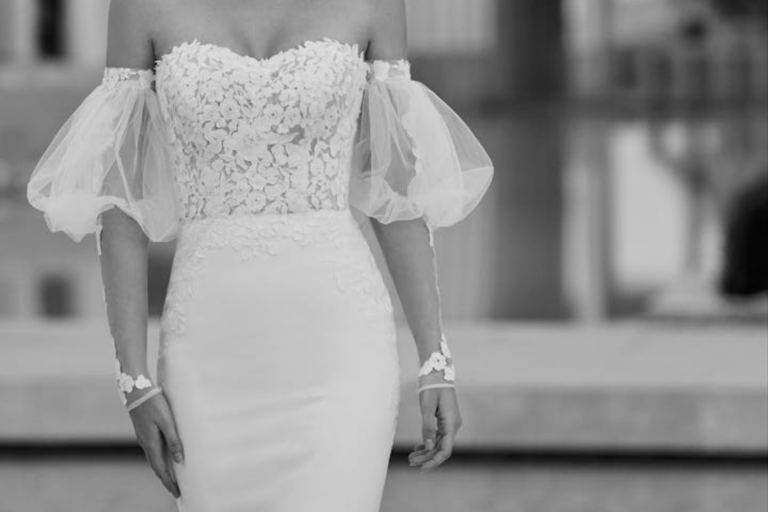
Your wedding is one of the most important and memorable days of your life, so finding the perfect dress or outfit is all about making sure you feel your absolute best. This guide has covered everything from dress styles and silhouettes to unique alternatives and accessories. Whether you’re leaning towards a classic ball gown, a sleek jumpsuit, or even a sparkling sequin number, remember that your look should make you feel like the star of the show.
Wedding dress shopping can be a bit of a journey, filled with surprises and maybe a few unexpected “wow” moments. So, take your time, enjoy every try-on, and don’t stress if the process takes a bit longer than expected. After all, it’s all part of the fun!
And don’t forget to browse wedding dresses and boutiques near you here on Bridebook. Whatever your style and budget, there’s something for everyone!
You Might Also Like…
- The Ultimate Guide to Wedding Dress Codes
- How to Choose Your Wedding Dress
- How Much Does a Wedding Dress Cost? The 2024 UK Average
- How to Save Money on a Wedding Dress





















